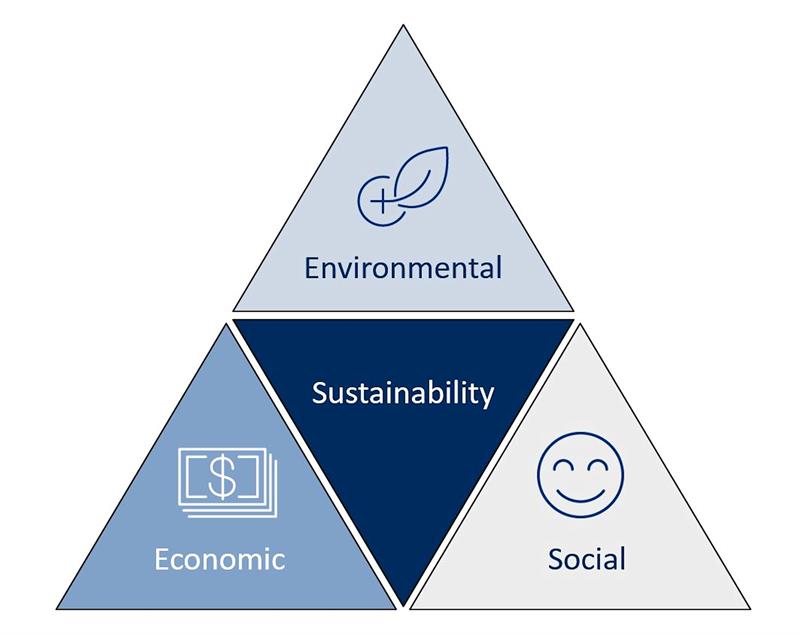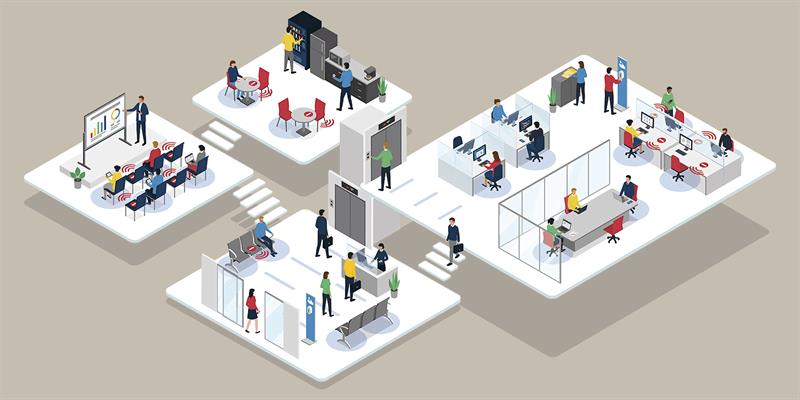Sea levels continue to rise, polar ice caps are melting, rain forest habitats are disappearing, and devastating fires are raging.
Has Covid-19, however, given the world a glimpse of how things could change for the better, with clearer and emptier skies, quiet and unpolluted roads, more people using green spaces. Could the global pandemic enable things to come together in a radically different way? Many of the technologies that could make this happen are already in place.

Take the example of energy harvesting switches and sensors in building automation. They are environmentally friendly because the technology does not require batteries or wires and therefore don’t pollute the environment. They are economical because battery-free wireless sensors are significantly cheaper in the long term in comparison with wired solutions or sensors with batteries. And they benefit society because people can live and work better and healthier in smart buildings.
Such devices also make buildings greener and help to reduce their CO2 emissions.
Based on this innovation, sensor and switch manufacturers, digital platform operators, system integrators, gateway producers and automation companies are forming partnerships to create “smart spaces”. In office buildings, at home, in hotels, in retail and in medical facilities the idea of ‘business as usual’ is simply not working anymore.
There are ideas everywhere to make rooms smarter, safer and healthier and, at the same time, to reduce CO2 consumption.
Simply constructing taller buildings or adding more streets won’t ever be sustainable. Only smart, networked use of existing buildings and infrastructure will work. By itself, technology cannot be the sole answer but when combined with other factors, digitalization supports this change and makes it easier for people. After all, digitalization supplies data for new workplaces and living environments and makes for a liveable future in a rapidly changing, nevertheless sustainable, world.
Buildings are some of the world’s biggest CO2 producers. They account for one third of all CO2 emissions in the EU. The energy savings potential is equally high – for example, with smart building control in residential and commercial structures.
To meet the energy efficiency standards mandated by national, international and provincial legislation, networking and smart building control facilitate digitalization of heating and air-conditioning systems by providing information about a building’s actual energy efficiency. Likewise, conformity to regulations dictates that the various disciplines must be intelligently interconnected and digitalized in keeping with a smart building or smart home.
Standardised interfaces and open wireless standards like those specified by the EnOcean Alliance, Bluetooth SIG and Zigbee Alliance form the basis for this.
Sustainable energy management
Thermokon, a member of the EnOcean Alliance, supports customers all over the world with climate-friendly solutions that supply optimal room temperature, hot water, electricity and good air quality. In the future, all systems will be networked, making them more efficient and comfortable to operate.

The pending energy transition can be managed only with future-oriented energy systems. Networked and smart devices are almost indispensable in this regard.
At its heart, the Thermokon solution consists of a scalable microservice architecture, which enables Thermokon to respond quickly and flexibly to changes and customer or partner requests. Another key element is the use of an IoT Hub for the secure and reliable connection of, and communication between, the devices and the cloud. Older heating systems are being retrofitted for communication with the hub, and new equipment generations will be connected directly to the IoT platform.
Installers and end users can set heating times and desired temperatures, for example, via their smartphones. The compatible heat pumps can also be networked with myriad devices from other manufacturers and be automated collectively. For example, a temperature sensor measures the current room temperature for demand-driven individual room control.
Societal benefits from this technology include employee well-being whilst the economic benefits of productivity can be increased in offices through different parameters such as human-centric lighting (HCL) and demand-based use of space. The use of IoT solutions allows companies to adapt their planned use of space to actual and changing requirements, thereby identifying and cutting hidden costs.
The LaSalle real estate consulting firm has data to support the potential economic gains. The 3-30-300 rule is an example of the average cost ratios incurred by a company - $3 for energy; $30 for space; and $300 for salaries. (All figures are per square foot (0.09 m2) per year).
Because of the legal requirement to lower carbon footprints, companies are obliged to lower their energy consumption and reduce the CO2 emissions of buildings. In many cases, a logical step is to invest in a smart, radio-based heating control system. At first glance, this pays off only where energy consumption is concerned, but in fact it is an initial step toward digitalized building spaces and offers additional savings potential.
If a certain basic infrastructure consisting of radio-based sensors, gateways and actuators is already in place, the system can be easily expanded. One common application is to optimise the use of rooms in commercial buildings. For example, if 30 to 40 per cent of the desks remain unused on a regular basis, it is worthwhile to introduce a hot-desking concept, in which the employees flexibly share desks depending on occupancy. To do this, additional presence sensors are needed that record the presence of people in a room or at a desk and send this information to the cloud, where an algorithm controls occupancy. This approach can reduce the cost of space, especially in expensive urban locations. Advantages under coronavirus measures are obvious with the drive to manage increased home working and for workplaces to implement measures such as social distancing, track-and-trace and antiviral hygiene.
It has also recently become recognised that CO2 monitors could significantly help to mitigate the coronavirus threat itself. There is increasing evidence that carbon dioxide levels in buildings correlate strongly with the airborne spread of infection, so monitoring the workplace air quality to determine the levels of CO2 in meeting spaces is highly beneficial.
To achieve this, CO2 monitoring devices need to be dependable, and easy to place where they are needed. Wireless, battery-free CO2 sensors represent the perfect solution and ideally need to be connected, for example to trigger alarms when CO2 concentration goes above a certain threshold, sending alarms to building management networks, or to smartphones via wireless networks.
What comes next?
Even when the pandemic restrictions are removed, benefits continue. Attractive and healthy work environments have been proven to increase employee productivity. According to LaSalle, optimisation has the greatest impact in this area. Concepts such as employee wellness take these findings into account and optimise work environments for staff. They include control of room temperature, air quality, humidity and lights, as well as including IoT solutions for demand-oriented cleaning service of restrooms and kitchens. Such applications create new tasks and business areas for facility management. The idea is no longer to simply manage a building but to offer new services.
Smart buildings are the wave of the future and not only for environmental reasons. The ability to charge electric cars must be provided, while demographic change requires new approaches to looking after people in need of care, and crowded conditions in cities demand better use of
space. Raw data collected by millions of sensors can be the solution for all these scenarios. This data forms the basis for energy efficiency, CO2 reduction and better use of resources.
Considering the large number of sensors required, these devices must be standardised, radio-based, self-powered and easy to retrofit.
Author details: Andreas Schneider is CEO, EnOcean













